Welcome to my comprehensive guide to peaceful community fish! If you’re looking to create a tranquil and harmonious aquarium environment, you’ve come to the right place. In this guide, I will introduce you to a variety of peaceful fish species, both freshwater and saltwater, that coexist peacefully in community tanks.
With my guidance, you’ll learn how to create a serene aquatic environment and maintain peace and harmony among your fish. Whether you’re a seasoned aquarium enthusiast or just starting out, this guide is for you.
Table of Contents
Key Takeaways:
- Peaceful community fish are non-aggressive species that coexist peacefully in community tanks.
- There are a variety of peaceful fish species, both freshwater and saltwater, that can bring tranquility to your home aquarium.
- Creating a peaceful aquarium community requires careful consideration of tank size, compatibility, and the unique characteristics of each species.
- Maintaining peace and harmony among your fish requires proper care, including monitoring water parameters and providing a balanced diet.
- If challenges arise, there are practical solutions to keep your peaceful community tank harmonious.
Understanding Peaceful Community Fish
Before creating a peaceful community tank, it’s essential to understand what exactly peaceful community fish are. These are species that coexist peacefully with other fish in a community tank. They are known for their non-aggressive behavior and ability to live harmoniously with a variety of tank mates. As you plan your community tank, remember that not all fish are community fish, so it’s essential to research the best peaceful fish species for your aquarium.
It’s important to consider the size of your community fish tank. A larger tank is generally better for these types of fish, as it provides more space and reduces the likelihood of territorial behavior. The recommended minimum size for a community fish tank is 20 gallons, but the larger, the better. You should also consider the number of fish you’re planning to keep. Overcrowding can lead to stress, aggression, and poor water quality, which can harm your fish’s health.
Community Fish Tank Setup
When it comes to setting up your community fish tank, there are a few key factors to consider:
- Filter and water quality: Peaceful fish species require clean, well-oxygenated water to thrive. Ensure you have an adequate filtration system and perform regular water changes to maintain good water quality.
- Decorations: Adding decorations like plants, rocks, and driftwood can create hiding places for your fish and reduce territorial behavior.
- Lighting: Depending on the type of fish you’re keeping, you may need to adjust the lighting in your tank. Some fish prefer dimmer lighting, while others require brighter light to thrive.
Peaceful Fish Species
There are many peaceful fish species suitable for a community tank. For example:
| Fish Species | Temperament |
|---|---|
| Neon tetra | Peaceful |
| Guppies | Peaceful |
| Otocinclus Catfish | Peaceful |
These peaceful fish species are just a few examples of the many options available. If you’re unsure which fish to choose, speak to a reputable aquarium store or fishkeeping expert for advice.
Overall, understanding peaceful community fish and creating a suitable environment for them is critical to keeping a harmonious aquarium. By researching the best species for your tank and ensuring they have adequate space and water quality, you’re on your way to creating a peaceful home for your aquatic friends.
Peaceful Freshwater Fish Species
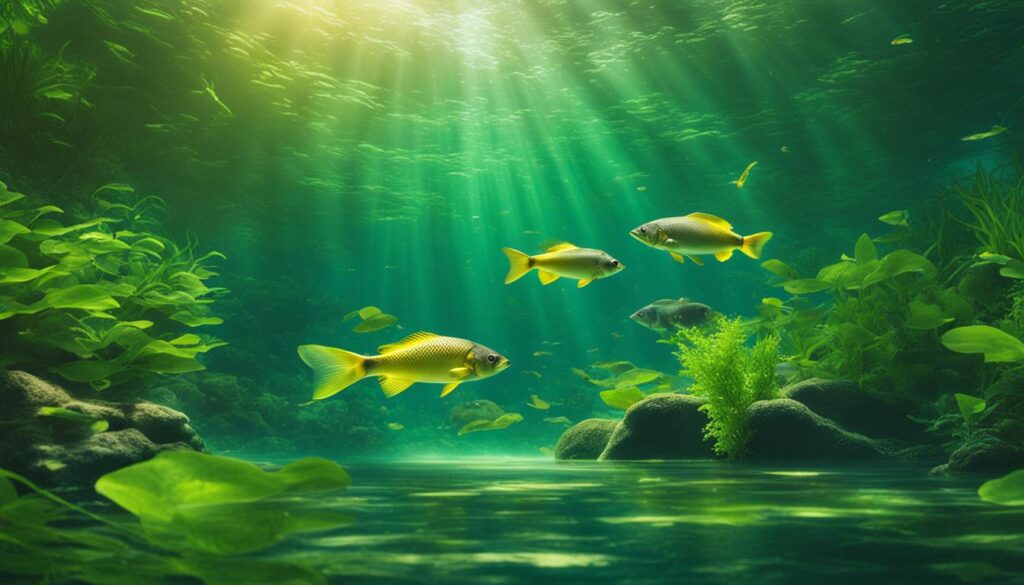
Freshwater aquariums offer an array of peaceful fish species that can create an environment of tranquility. From colorful tetras to graceful gouramis and peaceful bottom-dwellers like corydoras catfish, there are plenty of options to choose from when creating a serene freshwater community tank.
| Fish Species | Max Size | Temperament |
|---|---|---|
| Neon Tetra | 1.5 inches | Peaceful |
| Dwarf Gourami | 3 inches | Peaceful |
| Corydoras Catfish | 3 inches | Peaceful |
| Harlequin Rasbora | 2 inches | Peaceful |
| Platy | 2.5 inches | Peaceful |
One of the most popular species for a peaceful community tank is the neon tetra. These vibrant fish are schooling, so it’s recommended to keep them in a group of at least six. Similarly, the harlequin rasbora is another schooling fish that adds a pop of color to any tank. For a unique touch, consider adding a dwarf gourami, which is known for its beautiful colors and peaceful temperament.
When creating a peaceful freshwater community tank, it’s important to ensure that the fish you choose are compatible with each other. It’s recommended to have a mixture of top, middle, and bottom-dwelling fish to create a balanced and harmonious environment. Research the species carefully before adding them to your tank, as some can be aggressive or have specific dietary needs.
In summary, there are many peaceful freshwater fish species that are suitable for a community tank. From tetras to gouramis, there is no shortage of options to create a tranquil and calming aquarium.
Peaceful Saltwater Fish Species

If you’re looking to create a peaceful community tank in a saltwater environment, there are plenty of options to explore. These fish species are known for their non-aggressive behavior, making them ideal choices for creating a tranquil underwater environment. Here are some of the most popular peaceful saltwater fish to consider:
| Fish Species | Size | Water Parameters | Compatibility |
|---|---|---|---|
| Clownfish | 2-6 inches | pH: 8.1-8.4 Temperature: 75-82°F Salinity: 1.020-1.025 SG |
Compatible with other non-aggressive fish species |
| Royal Gramma | 3 inches | pH: 8.1-8.4 Temperature: 72-78°F Salinity: 1.020-1.025 SG |
Compatible with other peaceful fish species |
| Cardinalfish | 2-3 inches | pH: 8.1-8.4 Temperature: 75-82°F Salinity: 1.020-1.025 SG |
Compatible with other non-aggressive fish species |
Clownfish are perhaps the most iconic of all peaceful saltwater fish, known for their bright colors and charming personalities. They are also relatively easy to care for, making them a popular choice for beginner aquarists. Royal Gramma and Cardinalfish are also great options for a peaceful community tank, bringing a touch of elegance to your underwater world.
When selecting peaceful saltwater fish species, it’s important to ensure they are compatible with other non-aggressive fish. Avoid pairing them with aggressive or territorial species, as this can lead to conflict and disruption of the peaceful balance of your tank.
Creating a Peaceful Aquarium Community
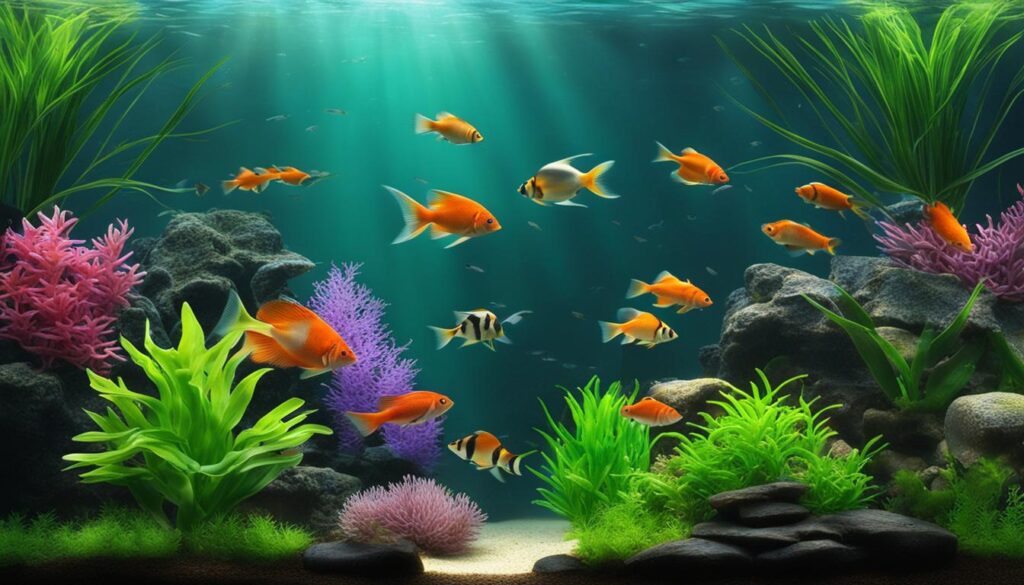
Creating a peaceful aquarium community involves careful consideration of several factors. These include the size of your tank, the species of peaceful aquarium fish you choose, and the number of fish you add to your community tank. Follow these guidelines to ensure a harmonious community of peaceful fish in your aquarium:
Tank Size
The size of your tank is an important factor in creating a peaceful community of aquarium fish. A larger tank provides more space for fish to swim and reduces the risk of aggression between fish due to overcrowding. A good rule of thumb is to have one inch of fish per gallon of water. For example, if you have a 20-gallon tank, aim for a maximum of 20 inches of fish.
Compatibility
Choosing peaceful fish for community tanks is essential for maintaining a harmonious environment. Some species of fish are more aggressive than others and are not suitable for community tanks. It’s important to research the temperament and behavior of each species before adding them to your aquarium. Ask your local fish store or do some research online to find peaceful aquarium fish that are compatible with each other.
Number of Fish
Adding too many fish to your community tank can create a stressful environment and lead to aggressive behavior. It’s important to add fish slowly and in small groups, allowing them to establish their hierarchy and reduce the risk of aggression. Aim for a maximum of one to two fish per week, and monitor their behavior closely. If you notice any signs of aggression, remove the aggressive fish from the tank immediately.
Decorations and Hiding Places
Providing hiding places and decorations in your aquarium can help reduce stress and aggression among fish. This includes plants, rocks, and caves, which give fish a place to hide and establish their territory. Make sure to provide enough hiding places for all of your fish and arrange them in a way that doesn’t obstruct the flow of water in your tank.
Feeding
Feeding your fish a healthy diet is key to maintaining a peaceful aquarium community. Overfeeding can create excess waste and lead to health problems in fish. It’s important to feed your fish small, frequent meals throughout the day and remove any uneaten food from the tank to prevent pollution. Different species of fish have different dietary requirements, so do your research to ensure that you are providing your fish with the right nutrients.
By following these guidelines, you can create a peaceful and harmonious community of aquarium fish. Remember to always research the temperament and behavior of each species before adding them to your tank, and monitor their behavior closely to ensure their well-being. A well-maintained aquarium can provide hours of enjoyment and tranquility for both you and your peaceful aquarium fish.
Maintaining Peace and Harmony
Once you have established your peaceful community tank, it’s essential to maintain the peace and harmony among the fish. To ensure your peaceful aquarium fish thrive, you should consider the following factors:
Water Parameters
It’s vital to maintain stable water parameters for peaceful tropical fish. Keep an eye on temperature, pH levels, and ammonia, nitrite, and nitrate levels. The ideal temperature range for most peaceful aquarium fish is between 75-80°F (24-27°C), while the pH level should be between 6.5-7.5. Always monitor ammonia, nitrite, and nitrate levels to avoid any harmful spikes.
Feeding
Proper feeding is crucial for maintaining the health and peacefulness of your aquarium fish. Overfeeding can cause water quality issues, and underfeeding can lead to aggression and territorial behavior. Offer a varied diet of high-quality flakes, pellets, frozen, and live foods, and avoid overfeeding.
General Care
Routine maintenance tasks like water changes and filter cleanings are essential for keeping your peaceful community tank healthy and happy. Regular water changes, typically around 10-20% every two weeks, help to maintain good water quality. Clean your filters and check equipment regularly to ensure it’s working correctly.
By maintaining proper water parameters, feeding, and general care, you can create a stress-free environment for your peaceful aquarium fish.
A serene and tranquil environment helps to keep your peaceful tropical fish healthy and happy.
Showcasing Peaceful Community Fish
There are numerous peaceful fish species that you can add to your community tank to create a sense of tranquility. Here are some popular options that you can consider:
| Fish Species | Unique Characteristics | Compatibility with Other Tank Mates |
|---|---|---|
| Tetras | Colorful and active swimmers | Get along with most community fish |
| Gouramis | Graceful and elegant | Compatible with peaceful community fish |
| Corydoras Catfish | Bottom-dwelling fish that clean up debris | Get along with most community fish |
| Clownfish | Colorful and playful | Compatible with peaceful saltwater fish |
| Royal Gramma | Vibrant purple and yellow coloring | Get along with most community fish |
| Cardinalfish | Peaceful swimmers with striking blue coloring | Compatible with most peaceful tank mates |
As you can see, there is a diverse range of peaceful fish species available for your community tank. With careful consideration of compatibility and personality, you can create a harmonious and visually stunning aquarium.
Adding peaceful community fish to your aquarium not only enhances the aesthetic appeal, but it also brings a sense of calm to your space. These serene swimmers help to create a tranquil environment that can have a positive impact on your well-being, reducing stress and anxiety.
Troubleshooting Peaceful Community Tanks
Despite our efforts to create a peaceful community tank, challenges may arise. It’s important to troubleshoot and address any issues to maintain a harmonious environment for your fish.
Aggression
One of the most common issues in community tanks is aggression. If you notice any fish displaying aggressive behavior towards others, it’s important to take action.
First, make sure your tank is large enough for all the fish and they have plenty of hiding spots and territories. Aggression can arise from overcrowding or a lack of hiding spots.
If aggression persists, consider removing the aggressive fish from the tank and housing them separately.
Territorial Behavior
Territorial behavior can also lead to aggression in community tanks. Some fish are naturally territorial and require their own space.
To address territorial behavior, make sure your tank has plenty of hiding spots and territories for each fish. You can also rearrange decorations or add new items to the tank to help disrupt established territories.
Potential Diseases
Diseases can also impact the peace in your community tank. It’s important to monitor your fish for any signs of illness and take action immediately if you notice any issues.
Quarantine any new fish before adding them to your community tank to prevent the spread of disease. Keep up with regular tank maintenance like water changes and ensure your water parameters are within a healthy range.
Peaceful Fish for Community Tanks
If you’re still having trouble maintaining peace in your community tank, consider adding more peaceful fish species. Some popular options include:
| Fish Species | Tank Size | Compatibility |
|---|---|---|
| Neon Tetra | 10 gallons | Peaceful with most non-aggressive species |
| Harlequin Rasbora | 20 gallons | Peaceful with most non-aggressive species |
| Cherry Barb | 15 gallons | Peaceful with most non-aggressive species |
By following these troubleshooting tips and considering new peaceful fish species, you can maintain a harmonious community tank for your peaceful aquarium fish.
Conclusion
As a professional copywriting journalist, I have introduced you to the world of peaceful community fish in this comprehensive guide. It is evident that peaceful community fish can create a serene and calming environment in your home aquarium. By understanding the different species, creating a harmonious community, and providing proper care, you can enjoy the beauty of peaceful fish swimming together.
If you follow the tips and guidelines provided in this guide, you will be able to create a peaceful aquarium community that brings tranquility and relaxation to your home. Remember to pay attention to the water parameters, feeding, and general care to ensure that your peaceful tropical fish thrive in their tranquil environment.
Aquatic Haven
With the variety of peaceful fish species available, you can choose the best ones that complement each other and create a harmonious community in your aquarium. Imagine the beauty of serene swimmers gracefully swimming alongside each other, creating an aquatic haven in your own home.
Challenges Ahead
Despite your best efforts, maintaining a peaceful community tank requires patience, dedication, and constant attention. You may encounter challenges such as aggression, territorial behavior, and diseases. However, with the solutions provided in this guide, you can troubleshoot any issues that arise and maintain a harmonious community.
Final Thoughts
Overall, the peaceful community fish species offer a unique opportunity to create a calm and relaxing environment in your home aquarium. I hope that this guide has provided you with valuable information and inspiration to start a peaceful aquarium community of your own. Remember, a serene and tranquil home aquarium is within your reach!
FAQ
What are peaceful community fish?
Peaceful community fish are species that coexist peacefully with other fish in a community tank. They are known for their non-aggressive behavior and ability to live harmoniously with a variety of tank mates.
What are some peaceful freshwater fish species?
There are many peaceful freshwater fish species to choose from. Some popular options include tetras, gouramis, and corydoras catfish.
Can I have peaceful saltwater fish in my aquarium?
Absolutely! There are peaceful saltwater fish species that thrive in marine environments. Some examples include clownfish, royal gramma, and cardinalfish.
How do I create a peaceful aquarium community?
To create a peaceful aquarium community, consider factors such as tank size, compatibility, and the ideal number of fish. Ensuring that the fish have ample space and suitable tank mates is key to a harmonious environment.
How do I maintain peace and harmony in my peaceful community tank?
Maintaining peace and harmony in a peaceful community tank involves monitoring water parameters, providing proper feeding, and ensuring the overall well-being of the fish. Consistency and attention to detail are important for the long-term success of the tank.
What are some popular peaceful community fish species?
Some popular peaceful community fish species include tetras, guppies, platies, and rainbowfish. These fish are known for their peaceful nature and compatibility with other tank mates.
What should I do if aggression or territorial behavior occurs in my peaceful community tank?
If aggression or territorial behavior occurs in your peaceful community tank, consider factors such as tank size, overcrowding, and the balance of male-female ratios. Providing hiding spaces and rearranging decorations can also help alleviate aggression.
What are some common issues that may arise in a peaceful community tank?
Common issues in a peaceful community tank can include aggression, territorial behavior, and potential diseases. Regular observation, water testing, and proper quarantine procedures can help identify and address these issues proactively.
How can I create a serene aquatic haven with peaceful community fish?
To create a serene aquatic haven with peaceful community fish, consider their specific care requirements, provide a suitable environment, and maintain optimal water conditions. With careful attention to their needs, you can enjoy the tranquility that these fish bring to your home aquarium.
I am a passionate aquarist with over 30 years of hands-on experience in fishkeeping. My journey began at a young age, collecting fish from the wild and learning through experimentation. Specializing in tropical fish, I bring a deep understanding of the hobby to FishKeepingMadeSimple. The site provides honest, detailed reviews of essential products and accessories to help fellow enthusiasts create the best environments for their fish.

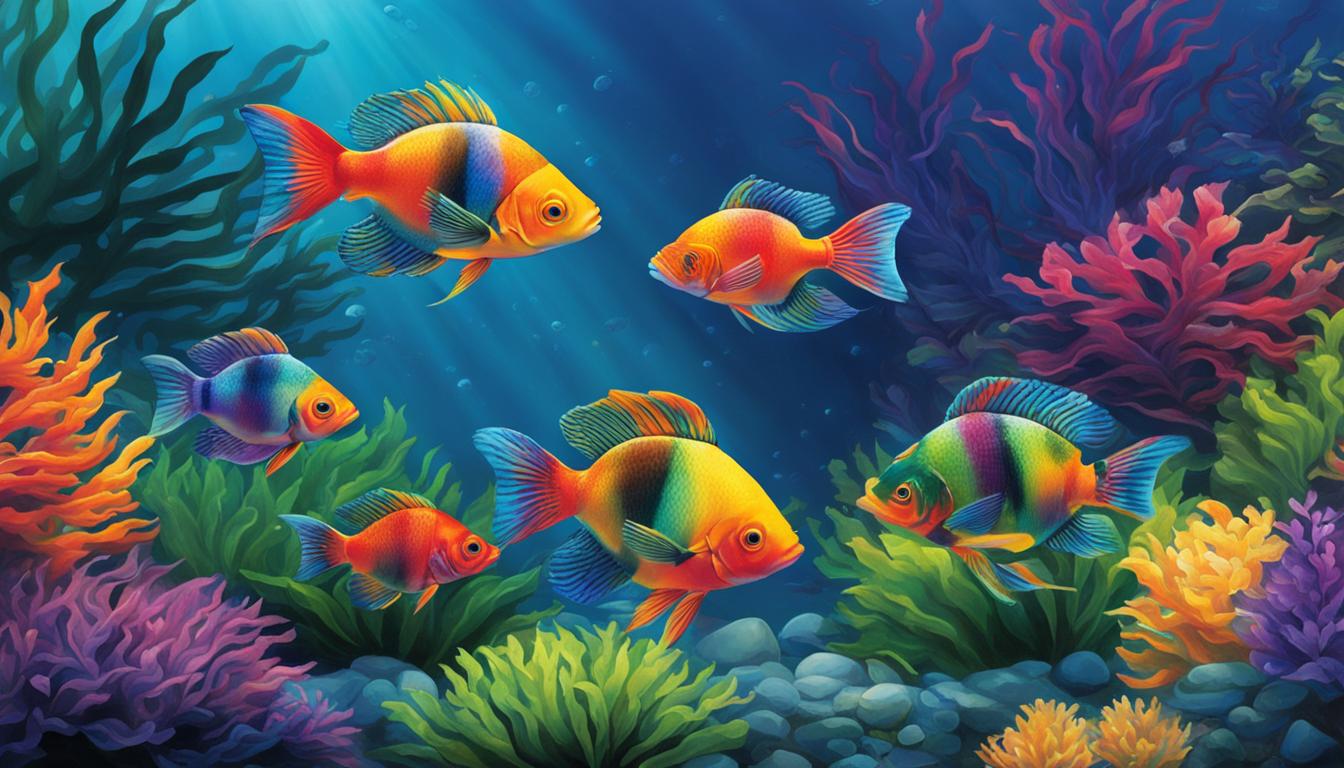
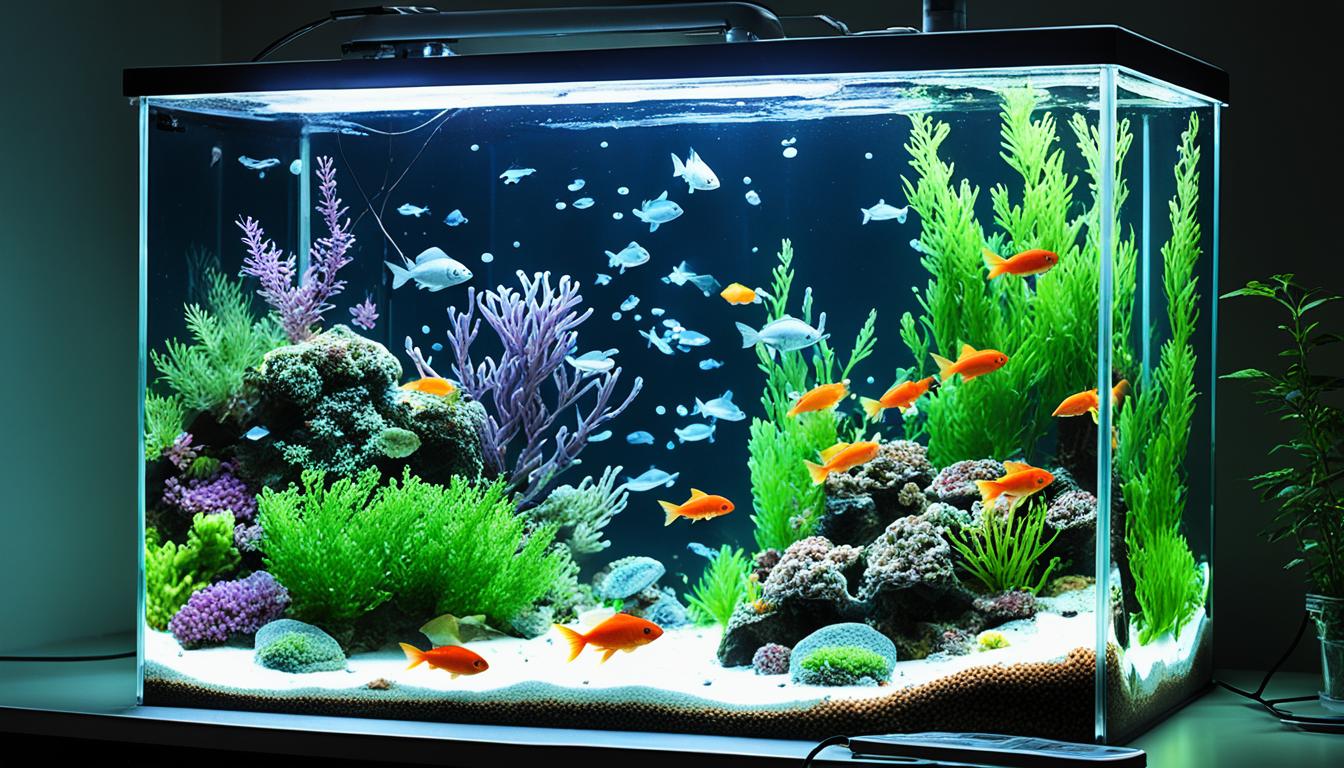
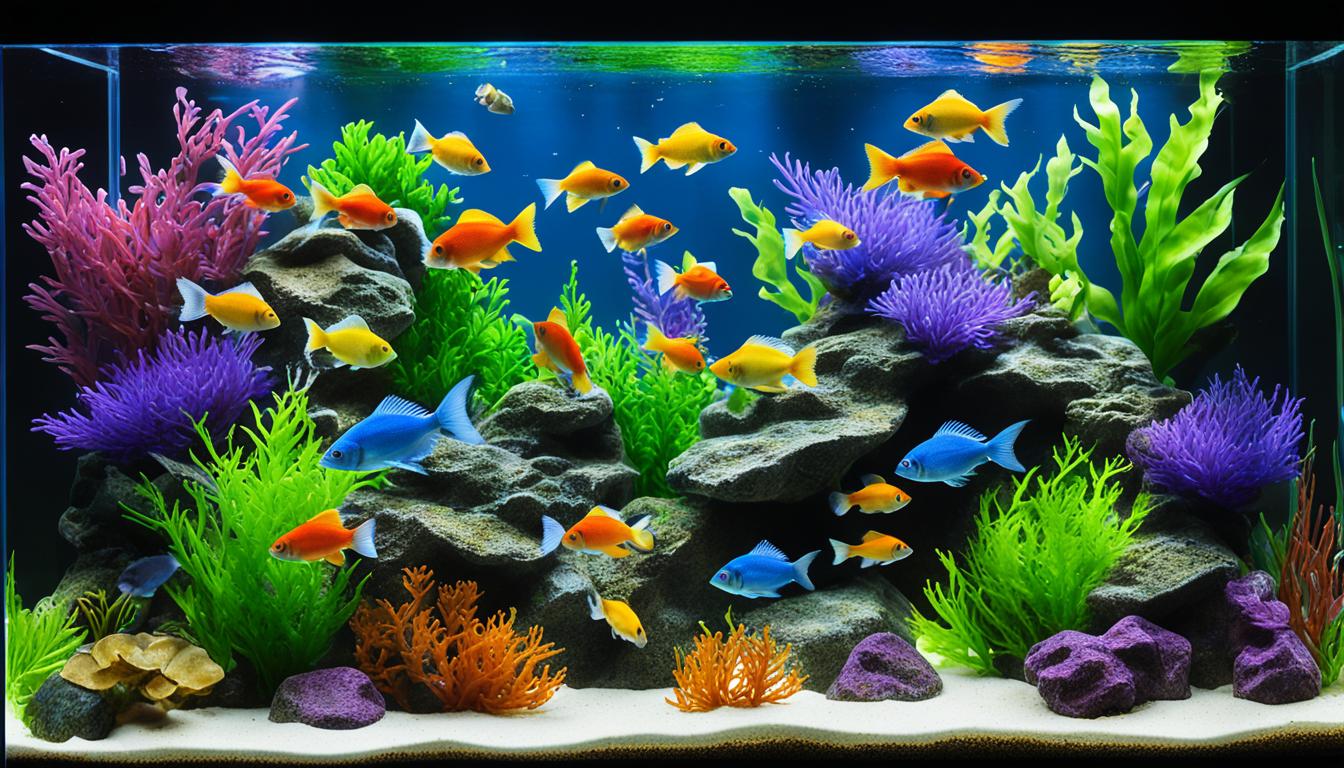






[…] platy fish, consider their compatibility in terms of size, temperament, and water requirements. Peaceful community fish such as tetras, guppies, and mollies are often good choices. Avoid aggressive or fin-nipping fish […]
[…] Pristella Tetra, also known as the X-ray Tetra, is a colorful and peaceful fish that adds beauty and liveliness to a community […]
[…] outcompete the loaches for food. Good choices include Danios, Rasboras, Tetras, and other peaceful community fish. It is important to provide plenty of hiding places and shade in the tank to create a suitable […]
[…] is peaceful and friendly, making it compatible with various tank mates. They can coexist with other peaceful community fish such as tetras, guppies, and […]
[…] the right tankmates means creating a community where every fish is happy. By taking the peaceful nature of German blue rams and fish compatibility into account, […]
[…] In the end, picking the right tank mates for Bolivian Rams makes your aquarium look amazing. Think about their size, mood, and space needs. This way, you’ll have a beautiful, healthy fish community. […]